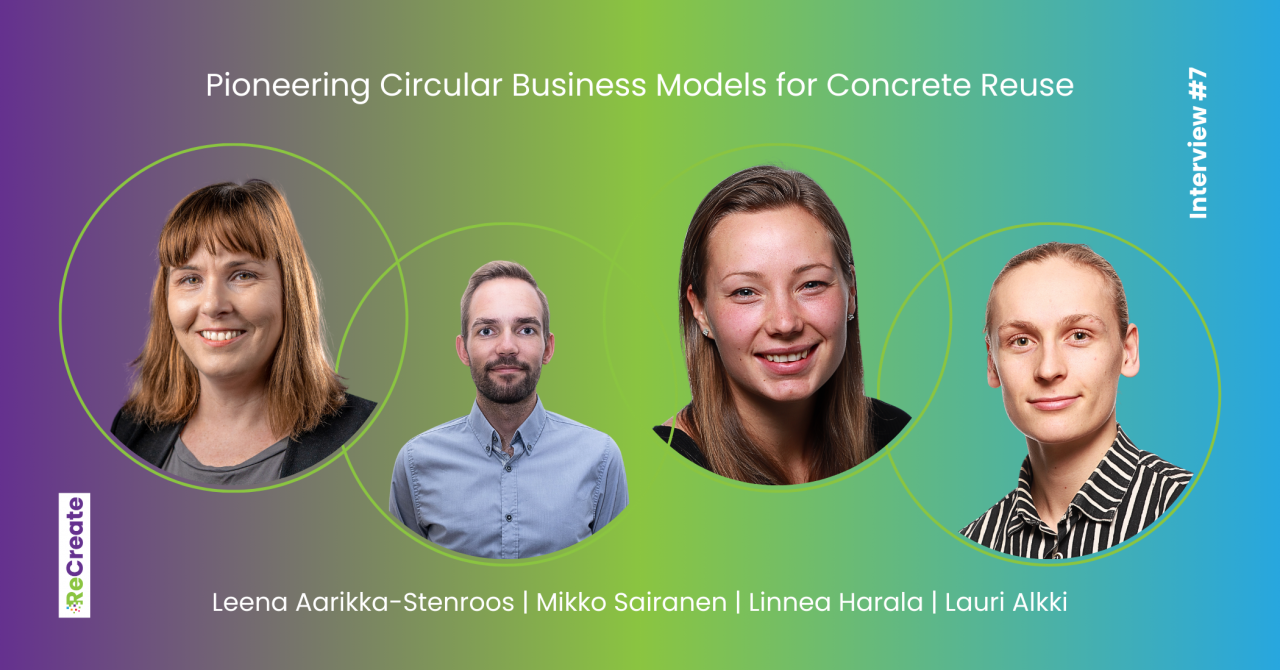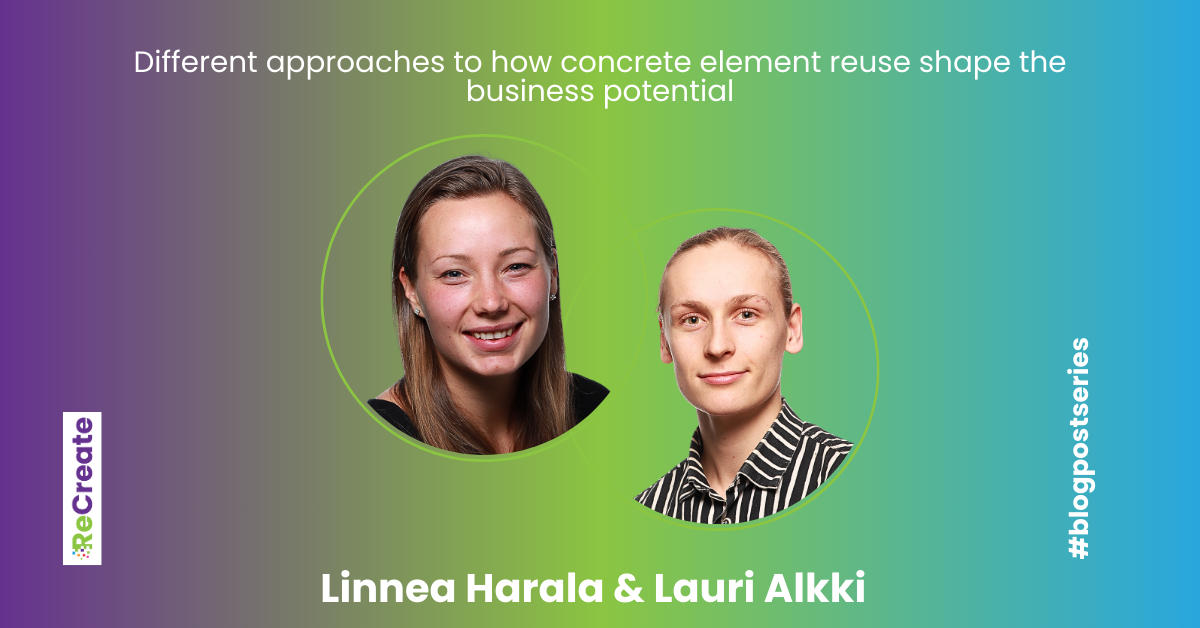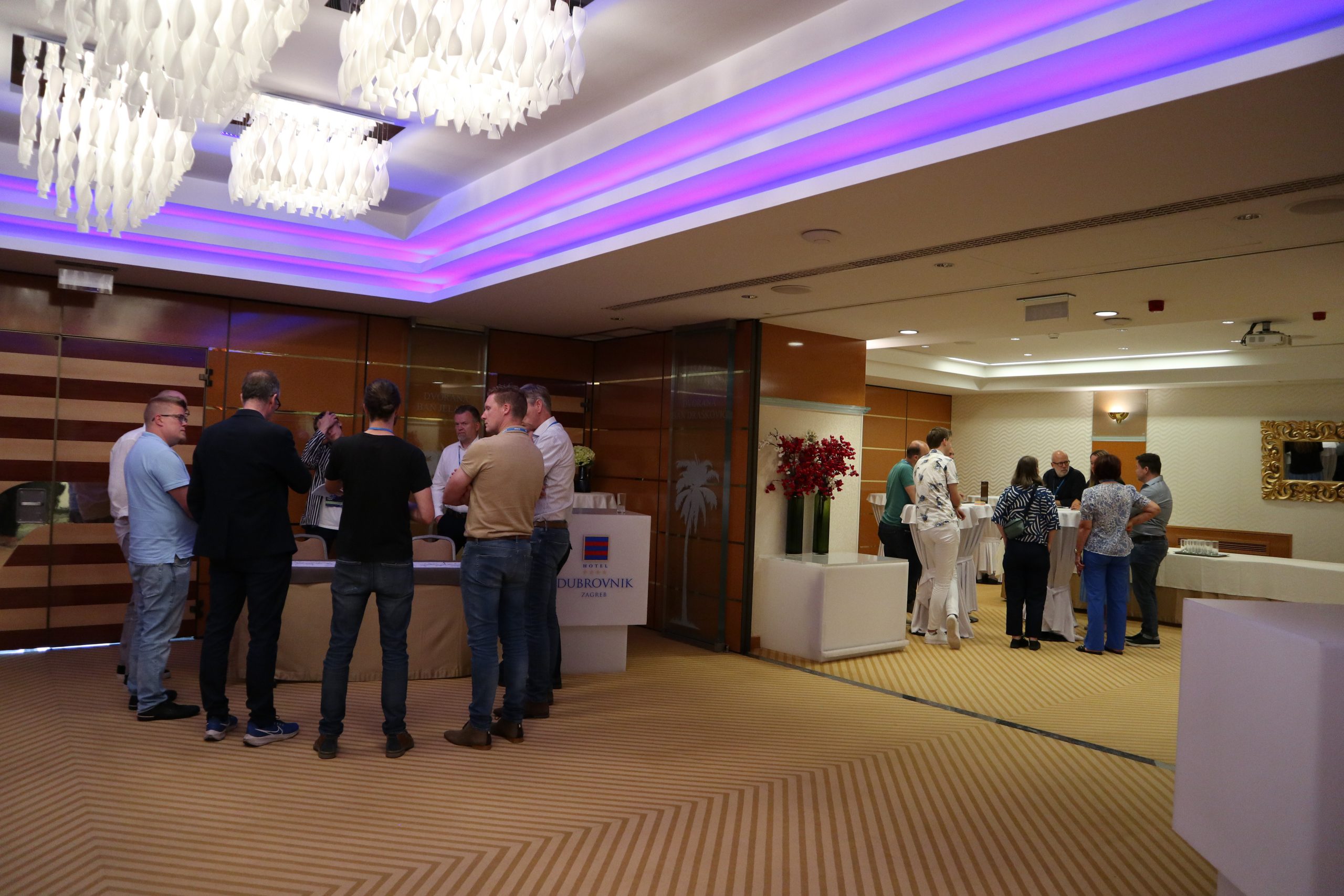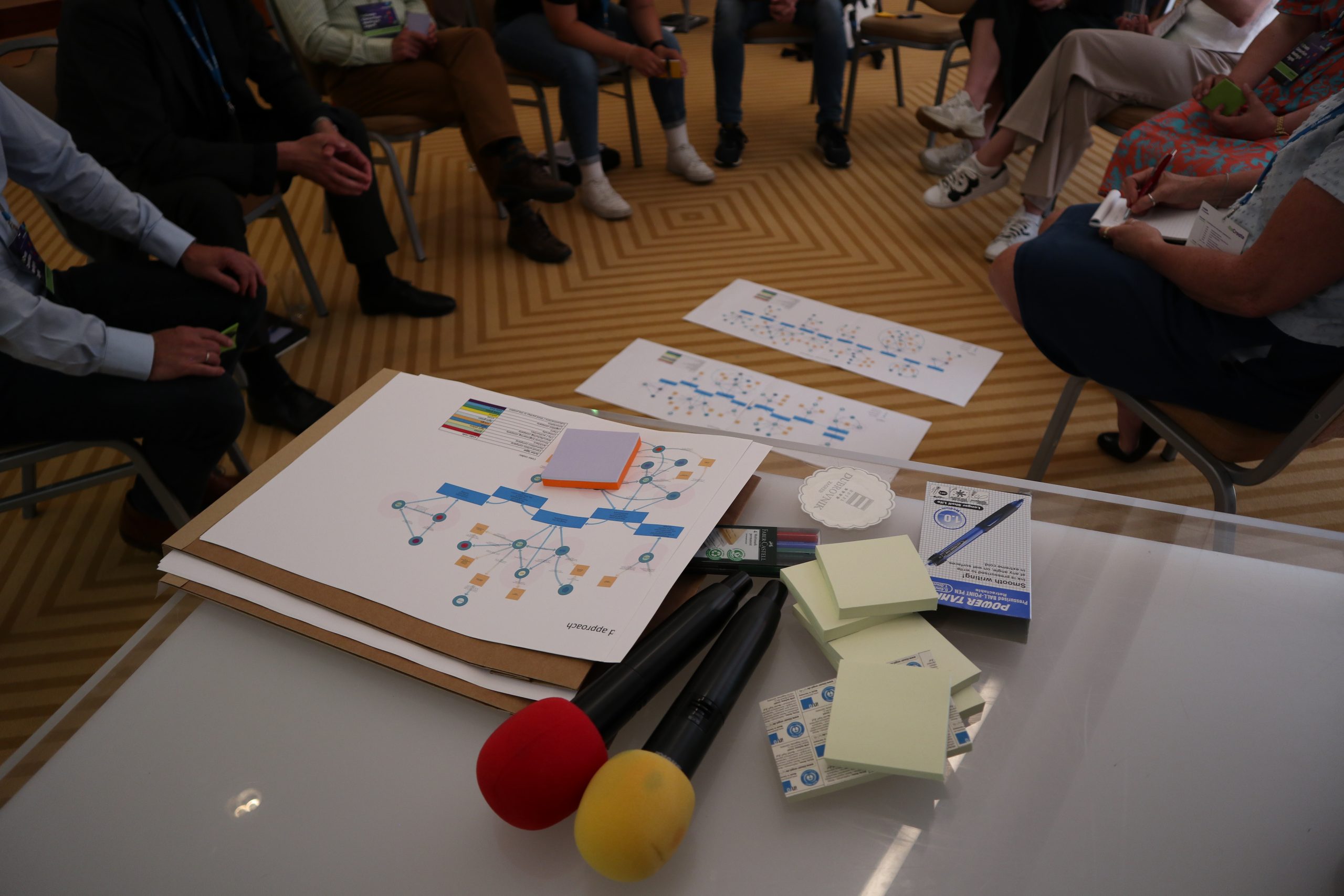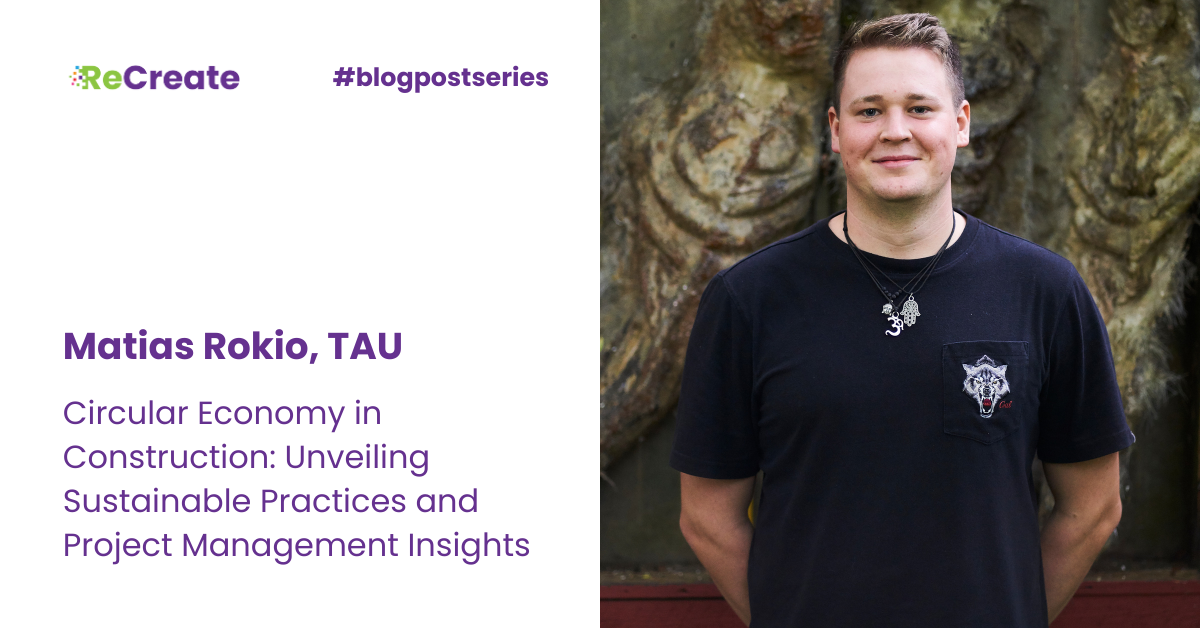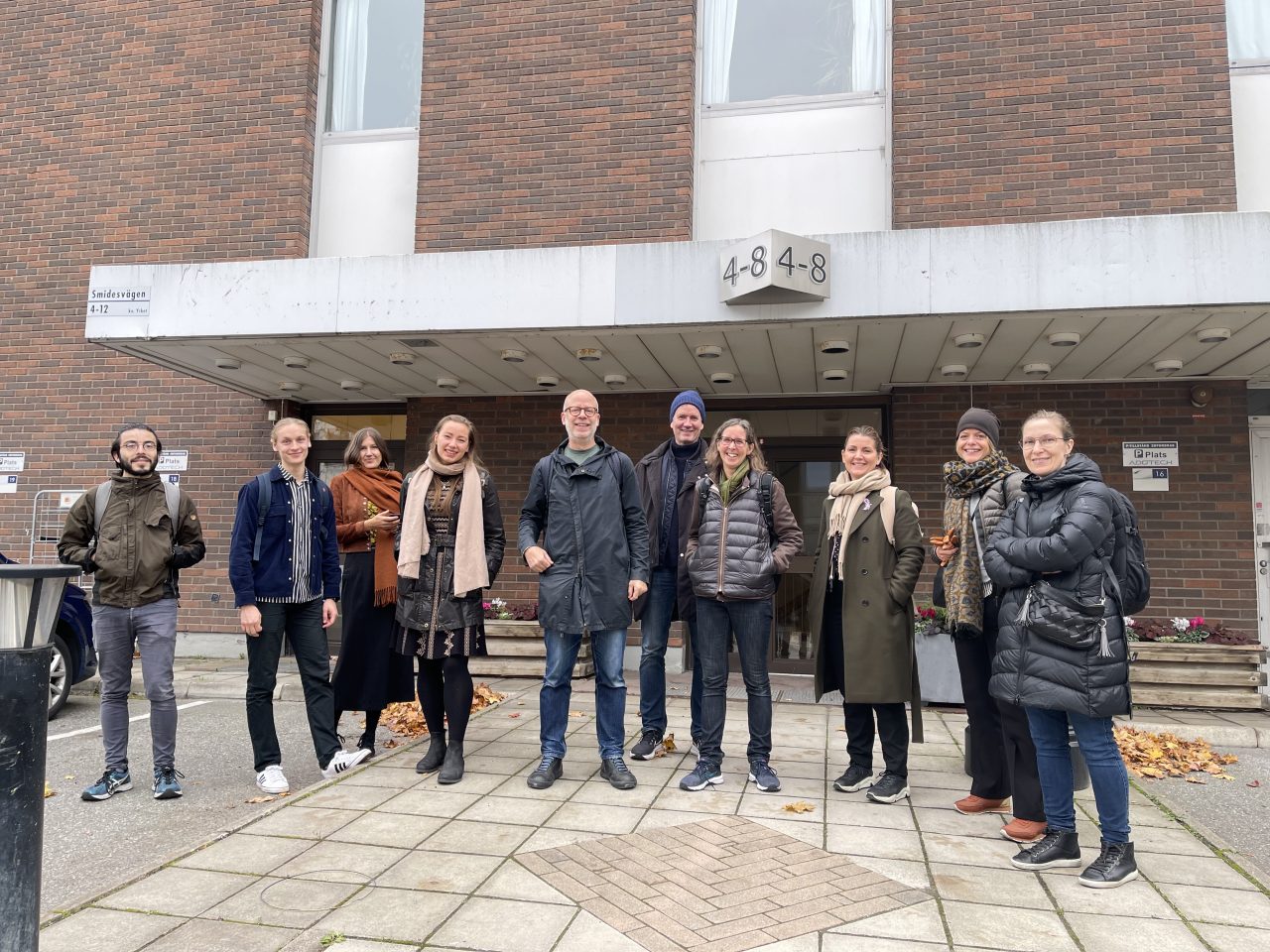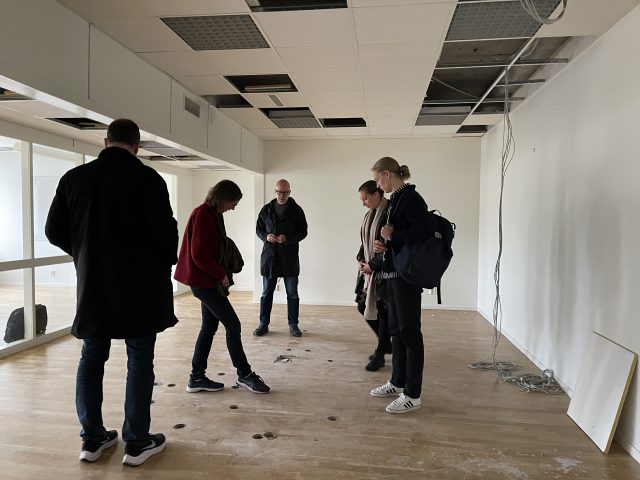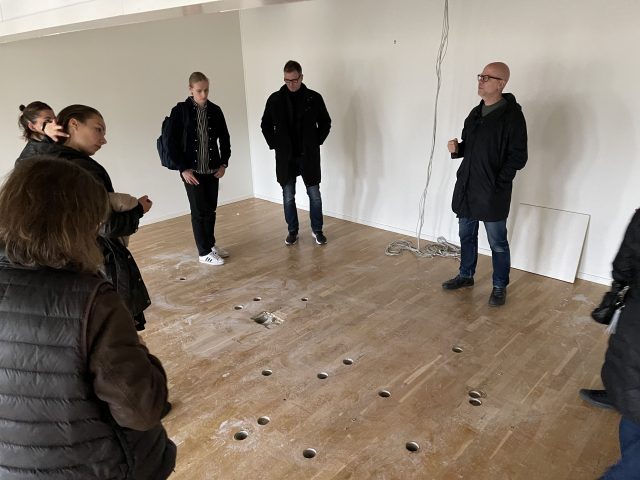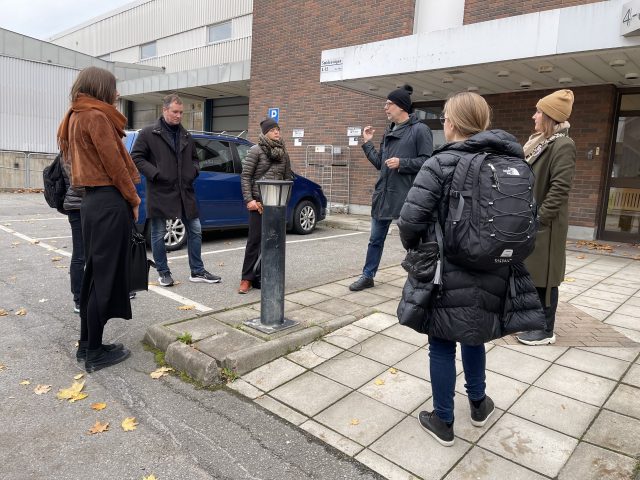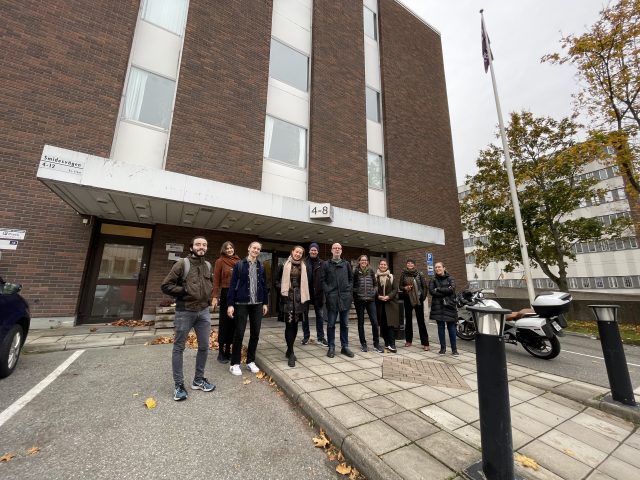As part of the ReCreate project, WP7 plays a pivotal role in developing circular business models for concrete reuse, contributing to the overall goal of establishing sustainable and economically viable practices in the construction industry. In this interview, key team members from Tampere University—Leena Aarikka-Stenroos, Mikko Sairanen, Linnea Harala, and Lauri Alkki—share updates on their progress, insights into co-creating business models, and the value propositions they’ve explored for expanding the reuse business across Europe.
Can you share some updates on what WP7 has achieved so far within the ReCreate project?
LEENA: Absolutely! We’ve hit two important milestones. First, we’ve mapped out how different countries approach the reuse of building materials, focusing on three specific cases. This has helped us understand how actors in the construction industry are involved in reusing concrete elements. Second, we’ve started developing business models that show how companies can profit from reusing concrete. Moving forward, we aim to keep refining our understanding of how these processes work across different countries to ensure the project’s success.
WP7 focuses on developing circular business models at both company and value chain levels. Can you explain how these business models are being co-created and how they contribute to the project’s goals?
MIKKO: We’ve created business model canvases to map out how companies can profitably reuse concrete. These canvases cover three levels: the overall system, individual company profiles, and specific process stages like quality control or storage. Different countries have slightly different setups. For instance, in Germany and the Netherlands, some companies manage most process stages from deconstruction to reconstruction, while in other countries, multiple companies handle different parts of the process. By analyzing and mapping these models, we help companies figure out how to make this approach profitable, both in the short and long term.
LEENA: I’d like to add that we’ve noticed a lot of variation in how these models work across different countries. Some companies only handle deconstruction, while others do both deconstruction and reconstruction, which affects their business approach. This diversity helps us understand how different roles and processes can be profitable.
Could you share some insights into the value propositions, value creation, and value capture strategies explored within WP7 for concrete reuse?
LINNEA: We found several ways that reusing building components can create value, either through cost savings or new revenue. Key factors include the design and condition of the donor building, location, logistics, and efficient project management. Regulations and industry acceptance of circular practices also play a big role in creating value.
LAURI: In the Netherlands, we saw that “one-on-one” reuse, where components are taken from one building and directly used in another, is the most profitable approach at the moment, but of course it requires a key actor who can take responsibility along the process from deconstruction to construction. Overall, in all pilot projects companies also gained new skills, especially in deconstruction and design, which are critical to enabling component reuse.
MIKKO: In Finland, making concrete reuse profitable is a challenge, especially due to high deconstruction labour costs. Success depends on strong regulations, efficient demand management, and clear strategies for reuse. The Netherlands and Germany are good examples of how to do this effectively.
LEENA: Learning is key. Companies may face higher costs at first, but as they gain experience in deconstruction and reuse, they become faster and more efficient, lowering costs in the long run.
One of WP7’s objectives is to identify strategies to expand the reuse business across Europe. Can you explain these strategies and how they deal with the local nature of the building industry?
LINNEA: We’ve considered the idea of creating a marketplace for concrete elements, which could help expand reuse. However, there are challenges in making this work locally and deciding who would manage and profit from it.
LEENA: Construction companies often work in different countries, and they can apply what they learn in one place to another. For example, a Finnish company in our project wants to use its new practices across all the countries they operate in. However, different countries interpret regulations differently, which can be a challenge.
LAURI: That’s a great point, especially since we have large companies like Skanska and Ramboll in the project. Sharing knowledge between countries is key, and some countries offer great examples for others to learn from.
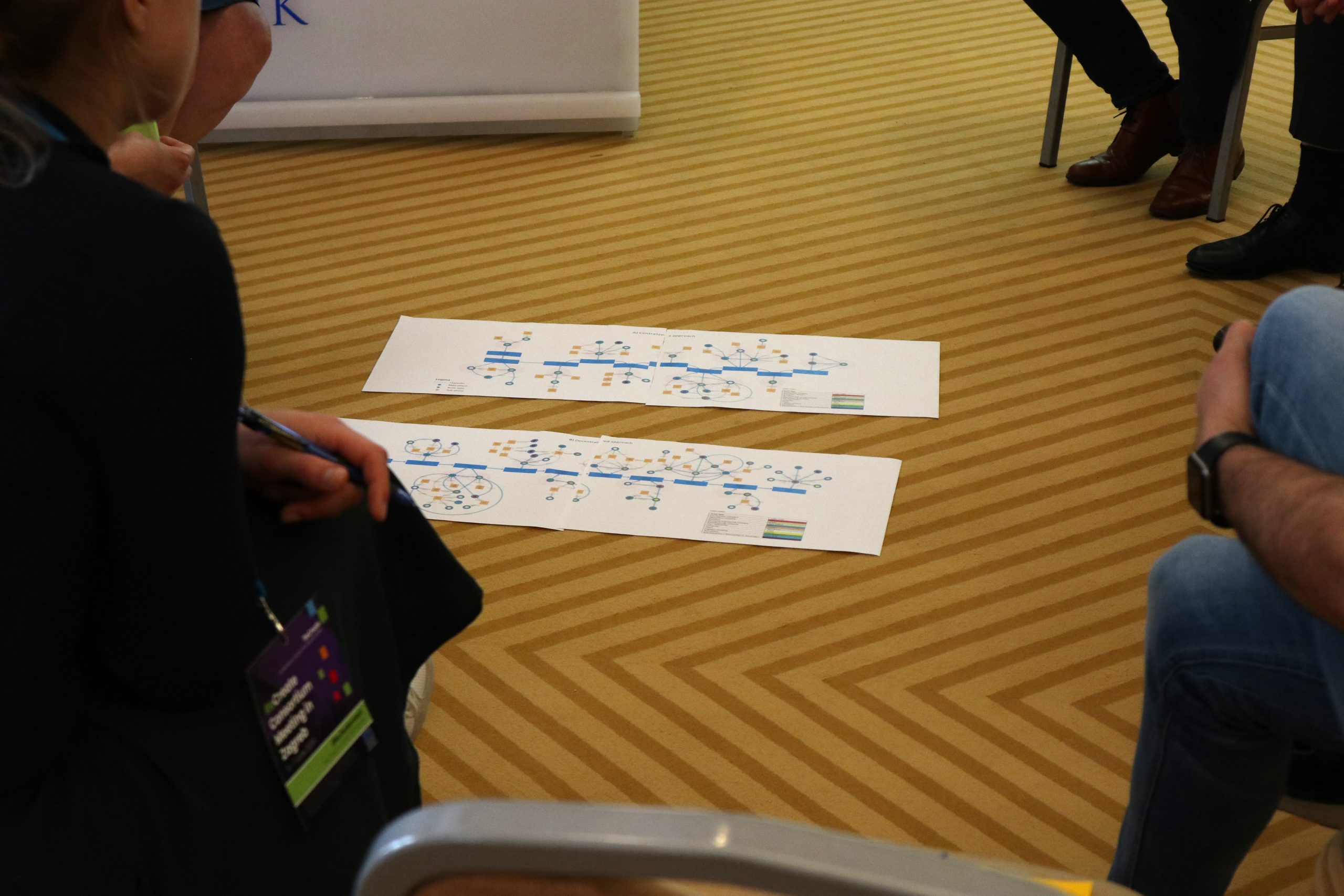
How does the analysis of safety and health aspects translate into economic value within the concrete reuse ecosystem, and what measures are being considered to enhance safety and health in this context?
LEENA: Safety and health analysis is crucial but incurs costs, such as for quality checks and safe practices. We need efficient ways to integrate these assessments, potentially using digital technologies, to minimize expenses while ensuring safety, which is vital for economic value in concrete reuse.
LAURI: In our discussions with Skanska, safety concerns about reused concrete elements were prominent. It’s essential to communicate to customers that these elements are thoroughly tested and safe to build trust in the market.MIKKO: Brand reputation in construction hinges on safety and quality. Companies must meet these expectations to protect their image, making quality a critical aspect of our analysis.
LINNEA: Work safety regulations can vary, affecting project costs and feasibility. For instance, Germany has stricter safety standards compared to Finland, impacting deconstruction costs.
Can you elaborate on the connections between social and legal barriers and economic value within the concrete reuse business models?
MIKKO: Social challenges, like public trust in reused concrete, can influence demand and economic value. Legal barriers, such as product compliance and market access issues, also affect economic viability. Balancing these factors is essential for successful business models.
LEENA: The Finnish Ministry of Environment values expertise in creating supportive regulations for circular processes, aligning with our project’s goals to shape favourable EU and national legislation for component reuse.
LAURI: In Finland, there’s confusion over classifying deconstructed elements as waste or not, which complicates handling and permits. This uncertainty has caused delays in the pilot project.
LINNEA: Ownership of elements is vital; in Finland, construction companies retain ownership from harvesting to sale, simplifying the process.
How do you envision the role of technology, societal acceptance, and regulatory factors in shaping the economic aspects of concrete reuse, as discussed in Task 7.4?
LEENA: Technology, societal acceptance, and regulatory factors are interconnected in influencing concrete reuse economics. Advancements like automation and digital modelling enhance feasibility and efficiency. Societal trust in reused materials boosts demand, while balanced regulations are needed to support innovation without hindering business. Effective communication and marketing can foster societal acceptance, helping to increase demand for reused concrete elements.
WP7 focuses on identifying easily achievable improvements and economic benefits in concrete reuse. What are some of the “low-hanging fruits” that have been identified, and how can they accelerate the transition toward more sustainable building construction?
LEENA: We’re identifying simple improvements, or “low-hanging fruits”, that can promote concrete reuse. While still gathering data, we see that small changes can encourage companies to embrace reuse without a complete overhaul.
LAURI: A key improvement involves rethinking collaboration roles in construction. Embracing broader collaboration beyond traditional roles can significantly enhance concrete reuse efforts.
MIKKO: Effective data management and communication among all parties are crucial. Knowing where deconstructed elements will be reused and planning accordingly can optimize the entire process.

In your journey with the ReCreate project, could you share a memorable experience or moment that has had a significant impact on your perspective or approach to sustainable construction and circular economy initiatives?
LINNEA: As a doctoral researcher, my most impactful experience was visiting the German cluster, where I saw how cost-effective building component reuse transformed old elements into new spaces. It was enlightening.
LEENA: A key moment for me was realizing the potential of concrete reuse in reducing emissions and seeing the project’s problem-solving spirit that drives sustainable improvements.
MIKKO: Visiting Lagemaat in the Netherlands was eye-opening; seeing their profitable concrete reuse operations changed my perspective on feasibility in this area.
LAURI: My memorable moments include witnessing the Lagemaat operations and the progress of our Finnish pilot project, both highlighting the project’s impact.
In summary, WP7’s efforts within the ReCreate project are forging a path toward a more sustainable and economically viable construction industry through the development of circular business models for concrete reuse. The insights gained from diverse country analyses, coupled with innovative strategies for collaboration and technology integration, underscore the potential for significant advancements in this field. By addressing safety, social acceptance, and regulatory challenges, the team is not only enhancing the viability of reused concrete but also building a robust framework for future circular practices. As these initiatives continue to evolve, they hold the promise of transforming the construction landscape across Europe, making it more resilient and environmentally responsible.


